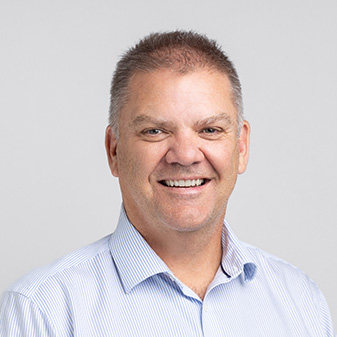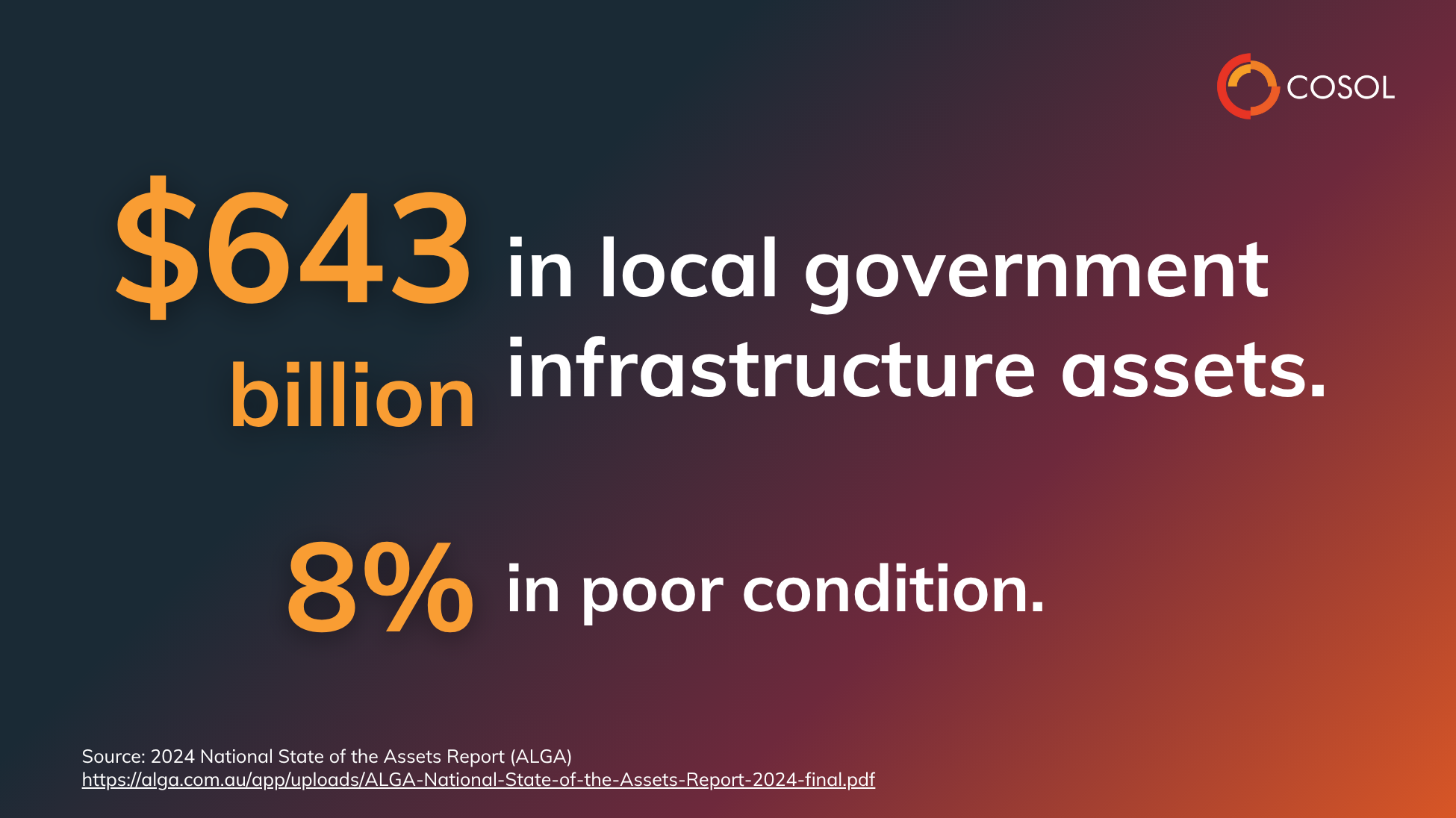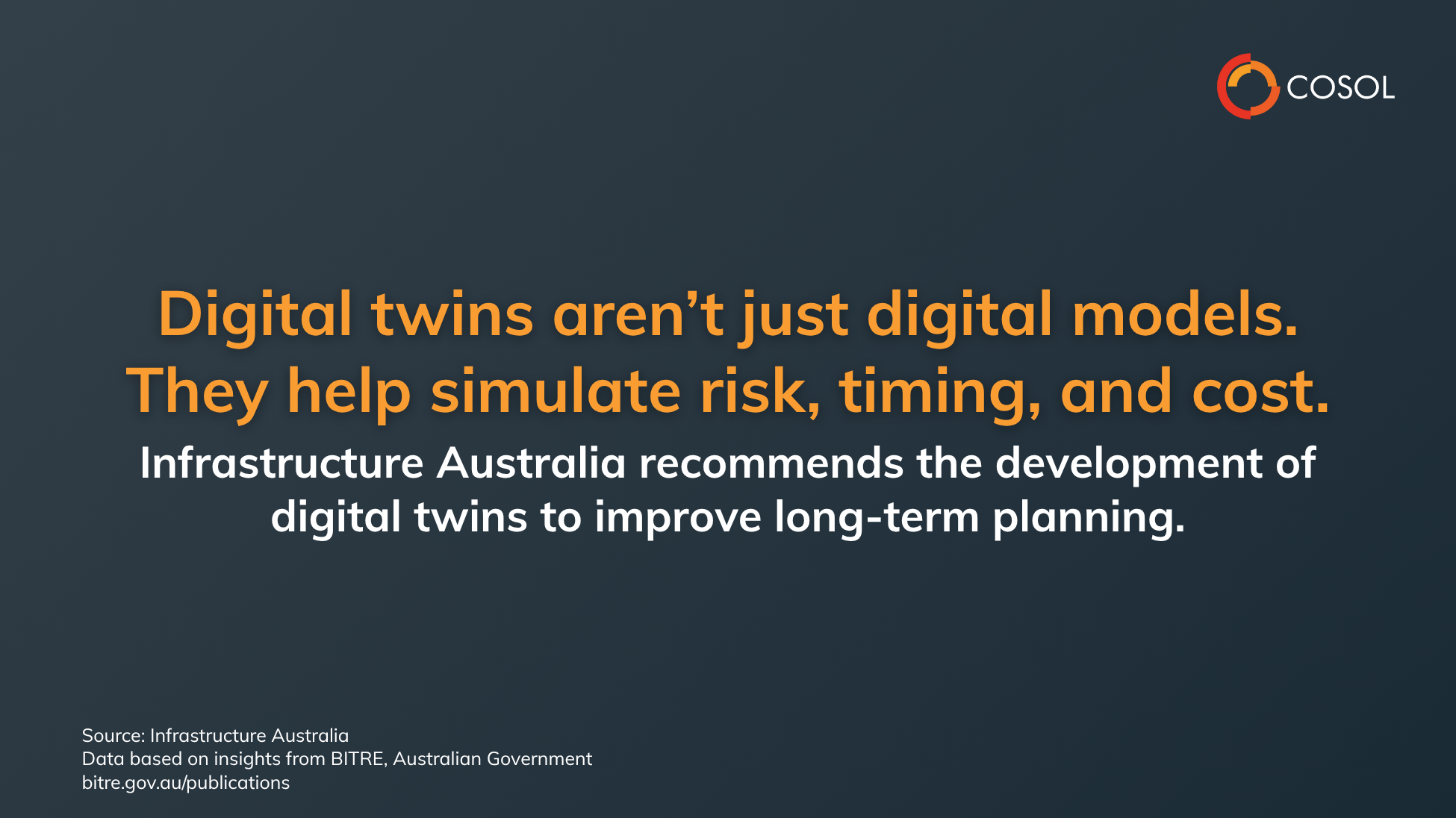At a glance
-
Age isn’t everything: Smart replacement decisions rely on performance data, not just age or cost.
-
Predict with confidence: AI identifies early signs of asset degradation and forecasts remaining useful life.
-
Plan, don’t react: Digital twins and predictive tools enable proactive, scenario-based asset management.
-
Justify with evidence: Data-driven insights support stronger business cases, budget alignment, and risk reduction.
Knowing when to replace an asset isn’t always clear. Age alone doesn’t tell the full story. Neither does cost. What leaders need is insight into how those assets are performing and what might be coming next.
From local roads to water systems and public transport, many of the infrastructure assets we rely on today were built decades ago. As demand grows and budgets tighten, there’s more pressure than ever to extend their lifespan without compromising performance, safety or compliance.
It’s not an easy balance. But with the right data, these decisions become more manageable.
Timing is everything
Delaying replacement might save money in the short term, but over time it can lead to rising maintenance costs, increased risk and unplanned service disruptions.
The 2024 National State of the Assets Report by the Australian Local Government Association (ALGA) found that 8 percent of local government infrastructure assets are already in poor condition. These assets require higher-cost interventions due to significant defects, reinforcing the need for early, evidence-based planning. (Source)
Understanding when to act is essential. Knowing where to start and how to prioritise is where many asset managers are looking to technology for support.
Forecasting failure before it happens
Artificial intelligence helps identify when assets are nearing the point of critical failure, well before it becomes visible. It does this by recognising patterns in asset condition, usage, exposure to environmental stress, and inspection records.
When this data is brought together, AI models can estimate remaining useful life and highlight signs of early degradation. This gives decision-makers more time to act and reduces the risk of last-minute interventions.
It also supports a shift from reactive work to strategic planning, helping teams stay ahead rather than falling behind.
Digital twins for real-world planning
Digital twins are virtual representations of physical assets that reflect real-world conditions. When paired with live data, they allow organisations to simulate how assets will perform under different scenarios and over time.
They're especially useful for:
-
The cost of ongoing maintenance compared with replacement
-
The impact of delayed action
-
How service levels evolve under stress or load
-
Different upgrade or refurbishment strategies
Supporting capital planning with evidence
Replacement decisions are rarely just technical. They often come down to financial justification and risk alignment.
Boards want to see a return on investment. Finance teams want confidence in the forecasts. Engineers want to reduce failure risk. Bringing these perspectives together takes more than a spreadsheet.
AI helps bridge these perspectives by linking asset performance data with cost modelling. That means organisations can compare the cost of extending an asset’s life with the cost of early replacement using data, not assumptions.
This supports:
-
Capital expenditure planning
-
Budget justification
-
Business case development
-
Risk mitigation
I’ve always believed we work with clients to turn uncertainty into insight. The question of when to replace an asset becomes clearer when you’re working with real data, not just gut feel.
Moving forward with clarity
These decisions aren’t getting easier. But with the right insight, they can become clearer.
AI, digital twins, and predictive analytics help shift decision-making from reactive to proactive. They turn timing into something that can be planned, not guessed.
At Toustone, we help organisations bring together condition data, performance trends and predictive tools to improve how replacement and renewal decisions are made. From lifecycle modelling to capital planning, we work with teams to prioritise investments with confidence.
It’s not about collecting more information. It’s about having the right insight at the right time so you can act earlier, plan better and reduce future uncertainty.

About Craig Lefoe
Craig Lefoe is Co-Founder and CEO of Toustone - A COSOL Company. With 30+ years in BI, infrastructure, and app development, he’s known for pioneering practical, data-driven solutions that deliver real business impact. A long-time advocate for cloud and AI, Craig helps organisations use technology to solve challenges and meet goals. His work has earned him speaking invitations from government, nonprofit, and private sectors alike.
COSOL are IBM Gold Partners and IBM Maximo specialists with over 15 years experience helping asset intensive organisations implement and upgrade their EAM systems as part of their asset information ecosystem.





